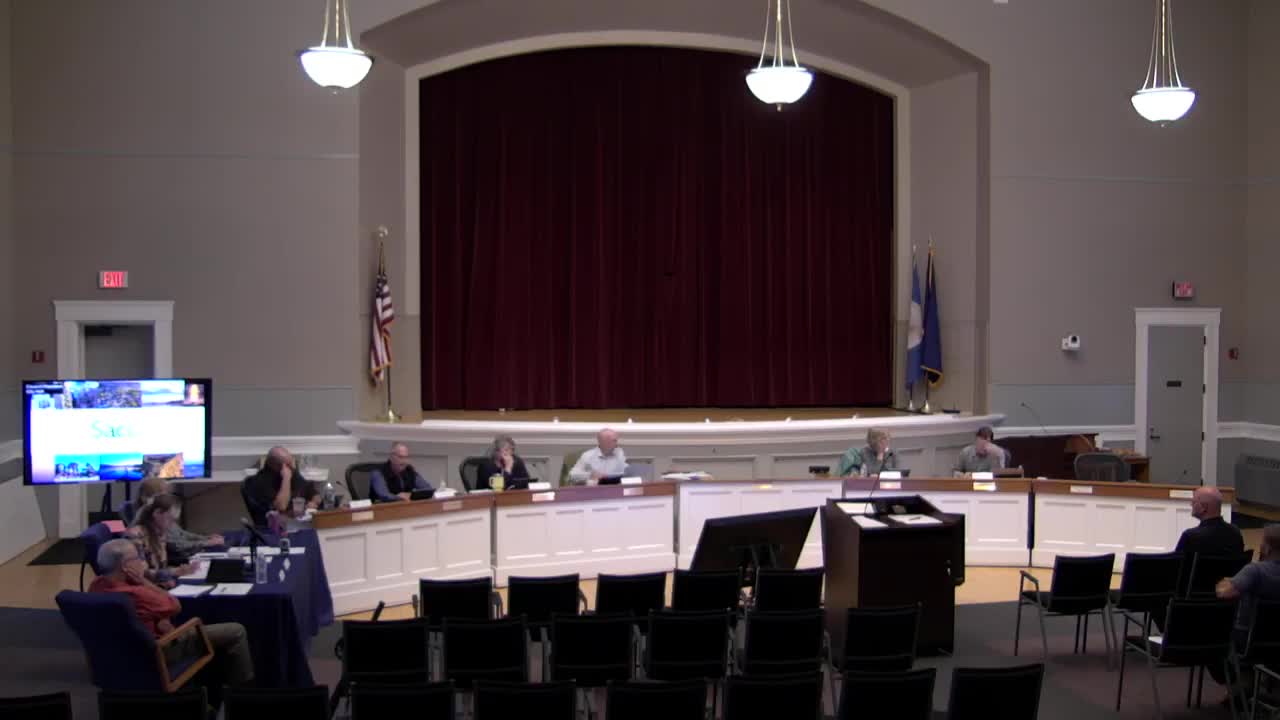City Board Debates Controversial Supportive Housing Restrictions
July 29, 2024 | Planning Board , Saco City, York County, Maine

This article was created by AI summarizing key points discussed. AI makes mistakes, so for full details and context, please refer to the video of the full meeting. Please report any errors so we can fix them. Report an error »

In a recent government meeting, a contentious discussion unfolded regarding the approval of a new hotel project, particularly focusing on the proposed condition that would prohibit the property from being used as supportive housing. The motion, introduced by board member Jeff, aimed to add a condition that would explicitly prevent the use of the property for supportive housing, both temporarily and permanently. Supportive housing is defined as housing linked to services that assist residents in maintaining their housing and improving their health.
Jeff expressed concerns that allowing supportive housing could transform the property from a valuable asset to a burden on the city’s tax base and services. He emphasized the need for clear definitions to protect the community from potential negative impacts should the property change ownership in the future.
The board engaged in a robust debate, with some members supporting the motion while others raised concerns about its implications. Board member Joyce suggested hearing from the applicant to clarify their position on the proposed motion, which led to further discussion about the hotel’s intended use. The applicant confirmed that the project was not intended for transitional housing, which was a key point of contention.
Despite the applicant's assurances, the board grappled with the legal ramifications of the proposed condition. Emily, a board member, cautioned against adding conditions that do not align with existing ordinances, suggesting that the board should focus on the hotel’s intended use as outlined in the application rather than creating new definitions.
Ultimately, the motion to prohibit supportive housing failed in a tie vote, reflecting the board's divided stance on the issue. The discussion highlighted the complexities surrounding zoning laws, the definitions of housing types, and the balance between community needs and property rights. The board agreed to revisit the conditions of approval, particularly focusing on clarifying the hotel’s intended use and ensuring compliance with existing regulations.
Jeff expressed concerns that allowing supportive housing could transform the property from a valuable asset to a burden on the city’s tax base and services. He emphasized the need for clear definitions to protect the community from potential negative impacts should the property change ownership in the future.
The board engaged in a robust debate, with some members supporting the motion while others raised concerns about its implications. Board member Joyce suggested hearing from the applicant to clarify their position on the proposed motion, which led to further discussion about the hotel’s intended use. The applicant confirmed that the project was not intended for transitional housing, which was a key point of contention.
Despite the applicant's assurances, the board grappled with the legal ramifications of the proposed condition. Emily, a board member, cautioned against adding conditions that do not align with existing ordinances, suggesting that the board should focus on the hotel’s intended use as outlined in the application rather than creating new definitions.
Ultimately, the motion to prohibit supportive housing failed in a tie vote, reflecting the board's divided stance on the issue. The discussion highlighted the complexities surrounding zoning laws, the definitions of housing types, and the balance between community needs and property rights. The board agreed to revisit the conditions of approval, particularly focusing on clarifying the hotel’s intended use and ensuring compliance with existing regulations.
View full meeting
This article is based on a recent meeting—watch the full video and explore the complete transcript for deeper insights into the discussion.
View full meeting
